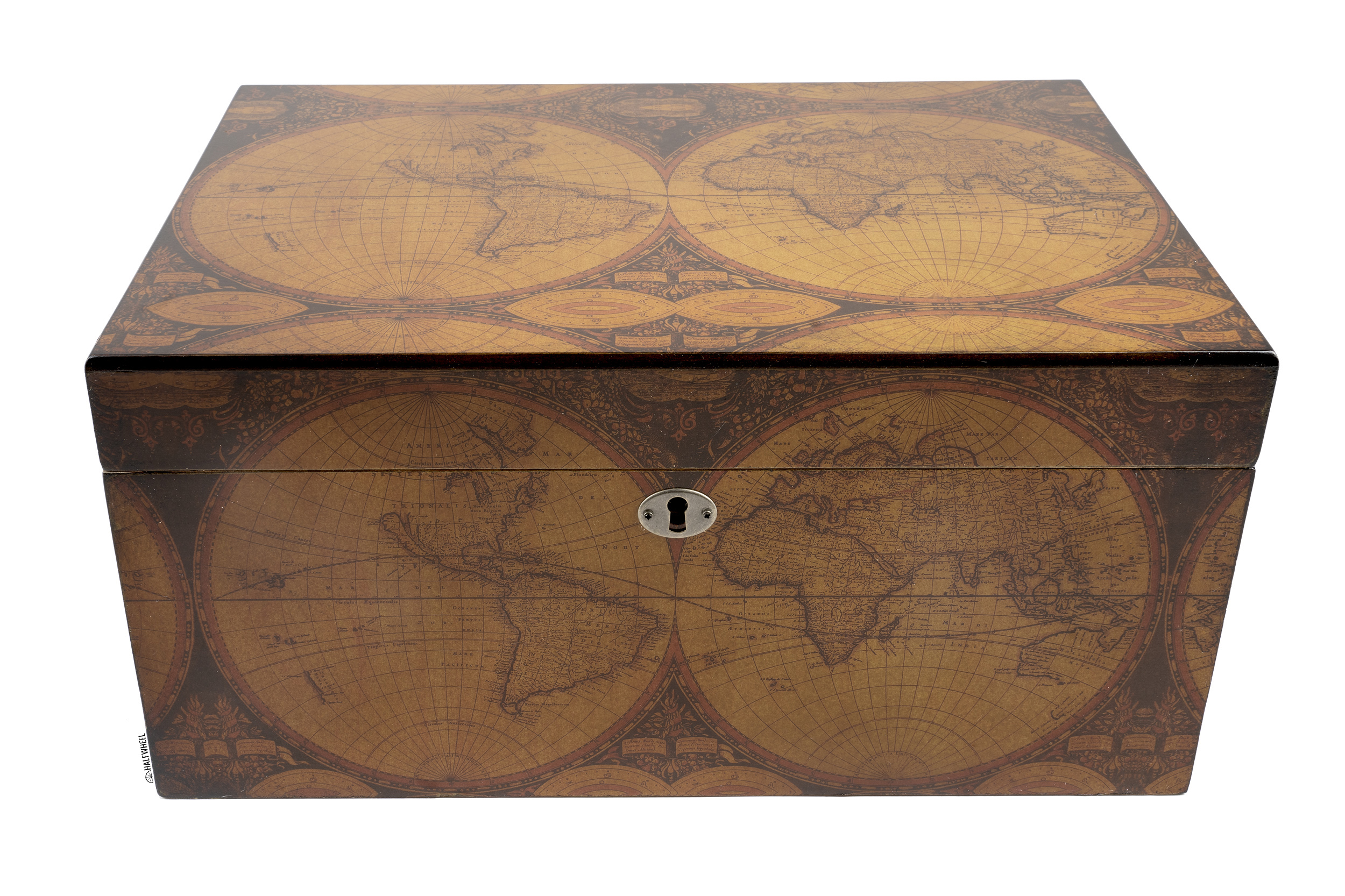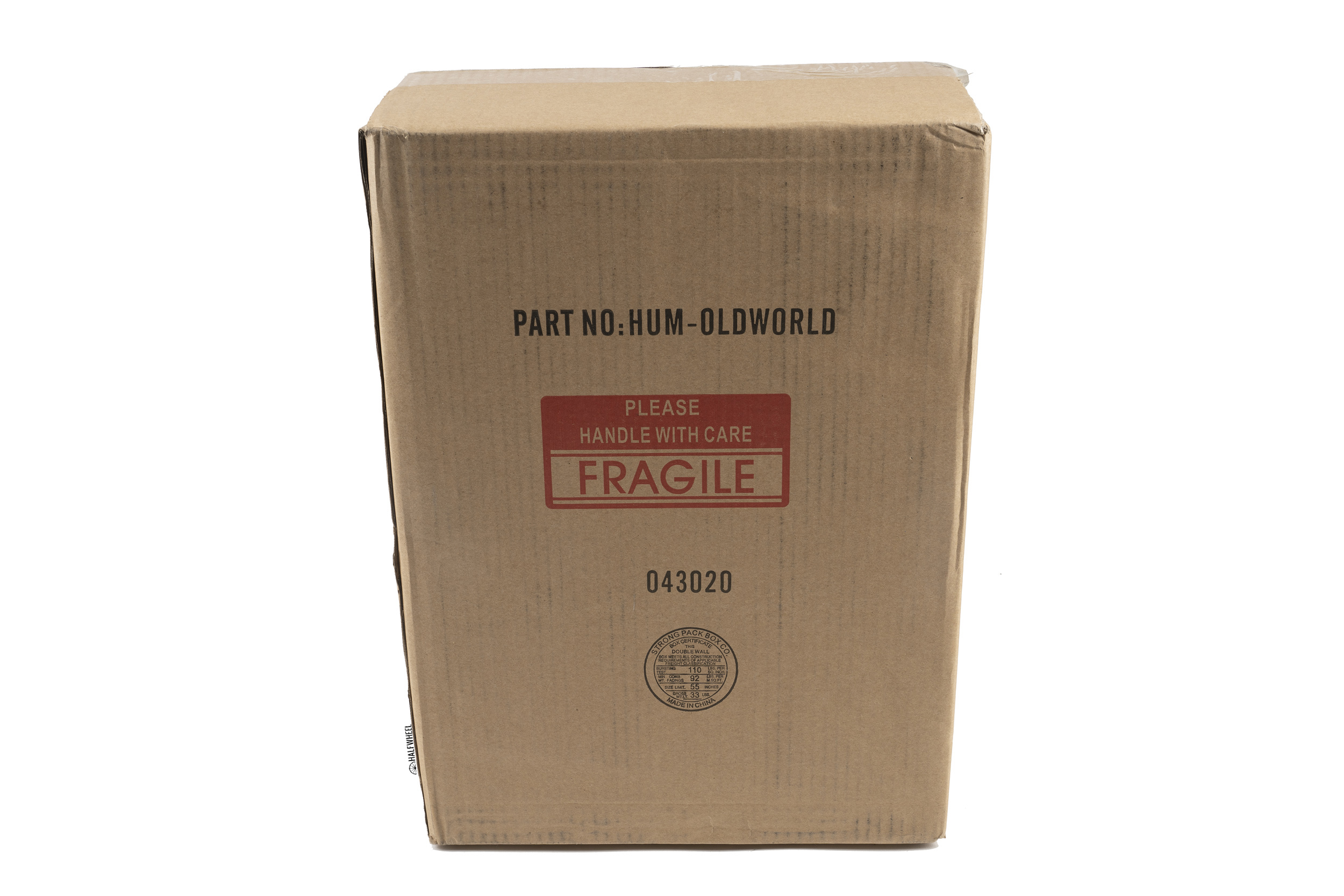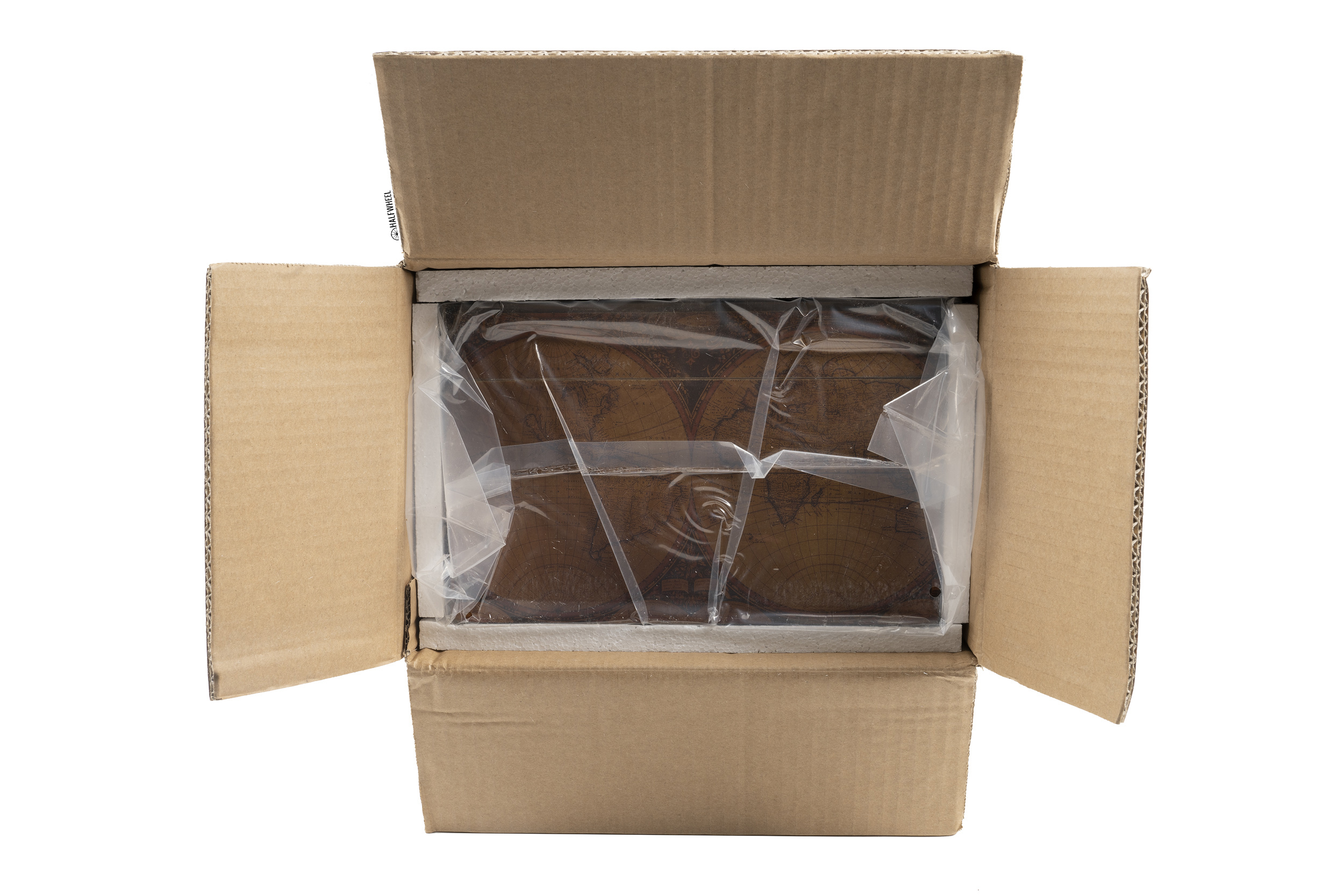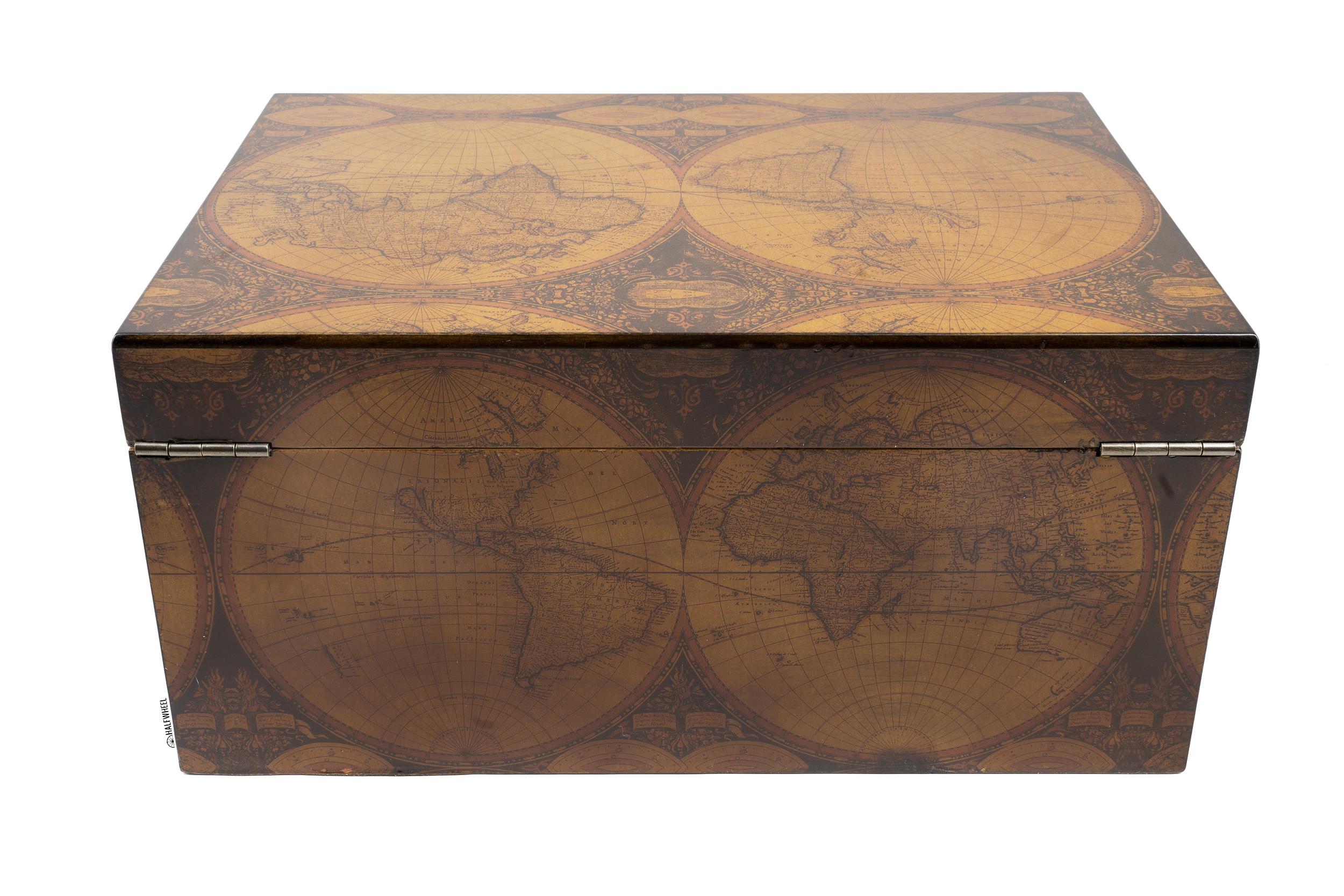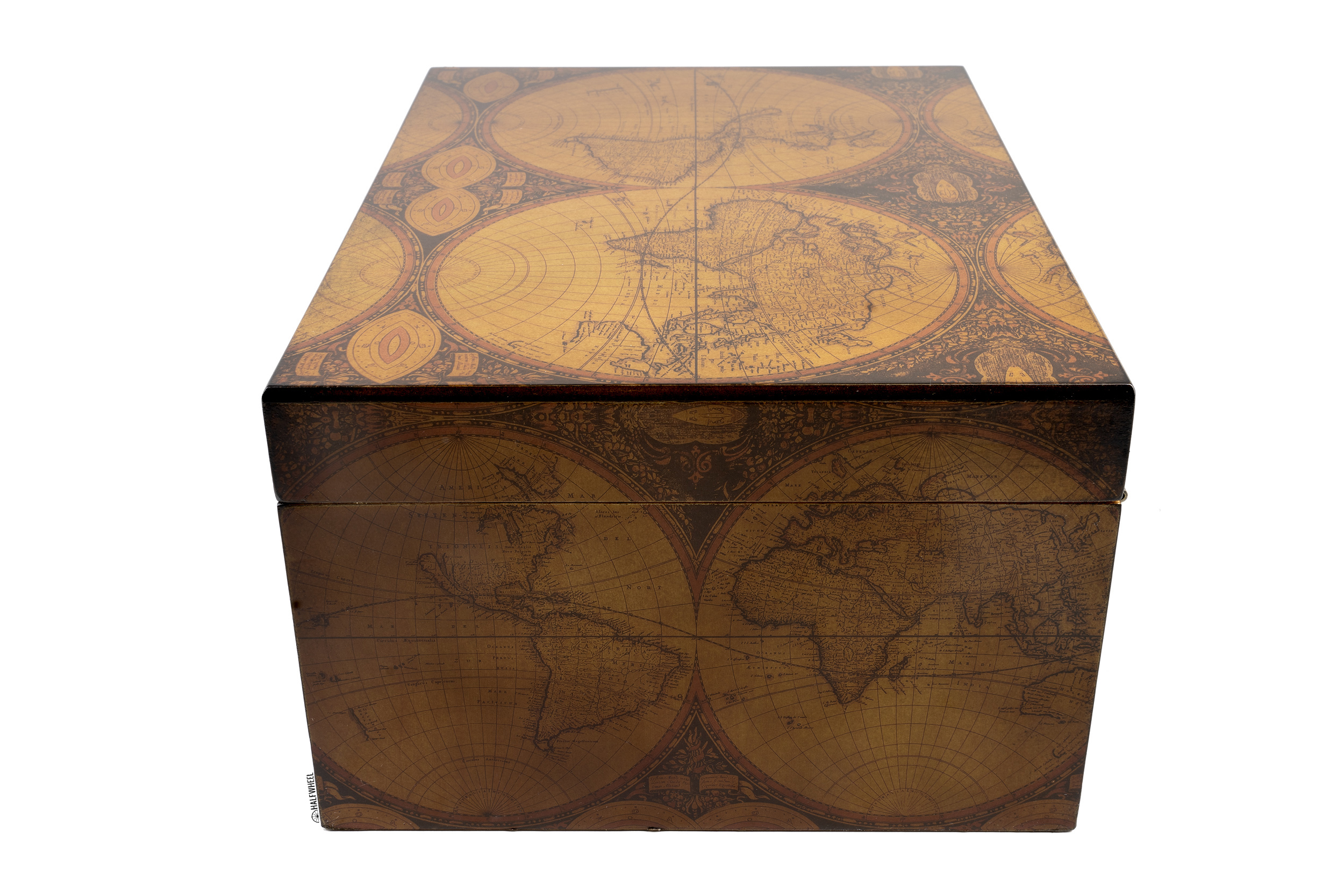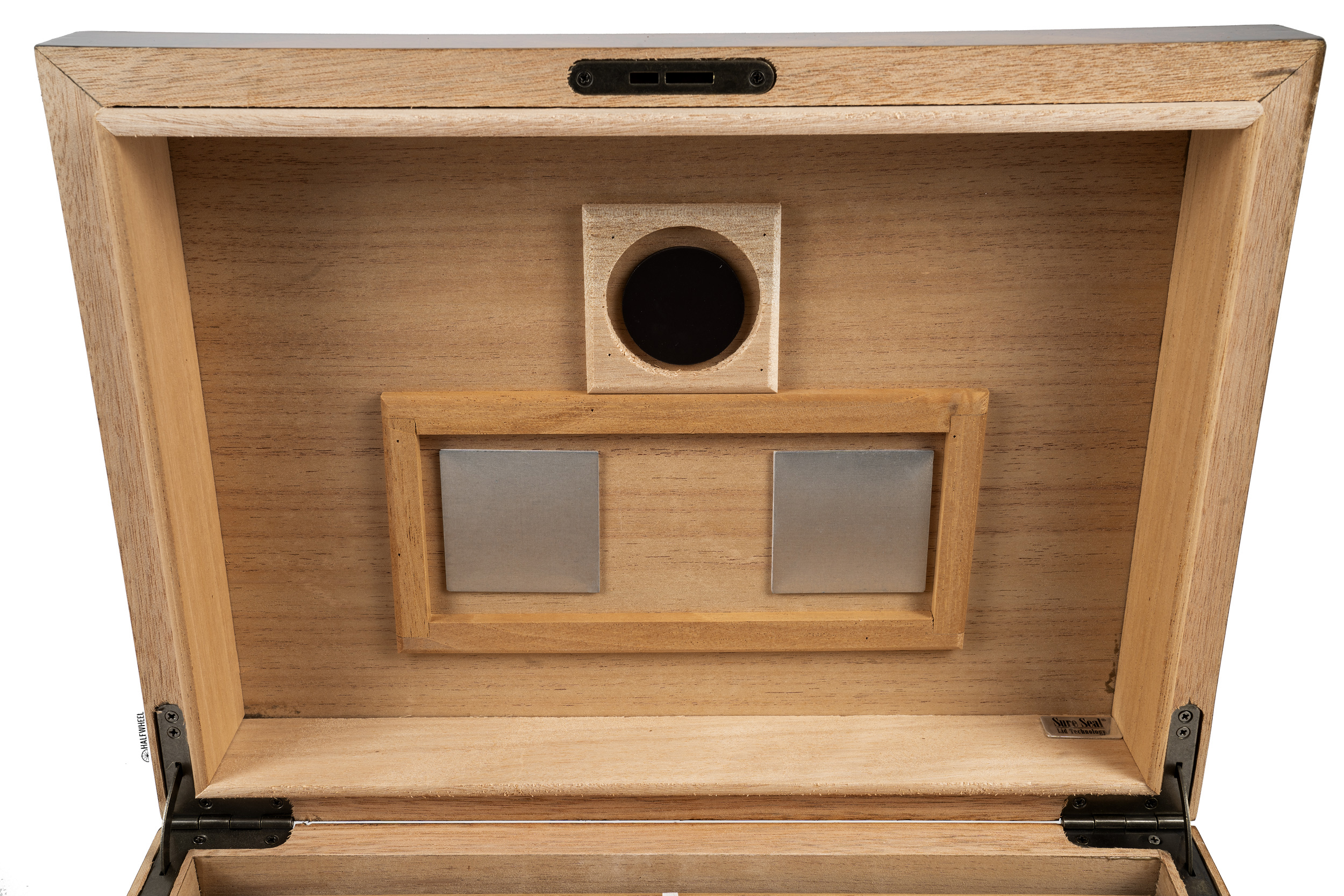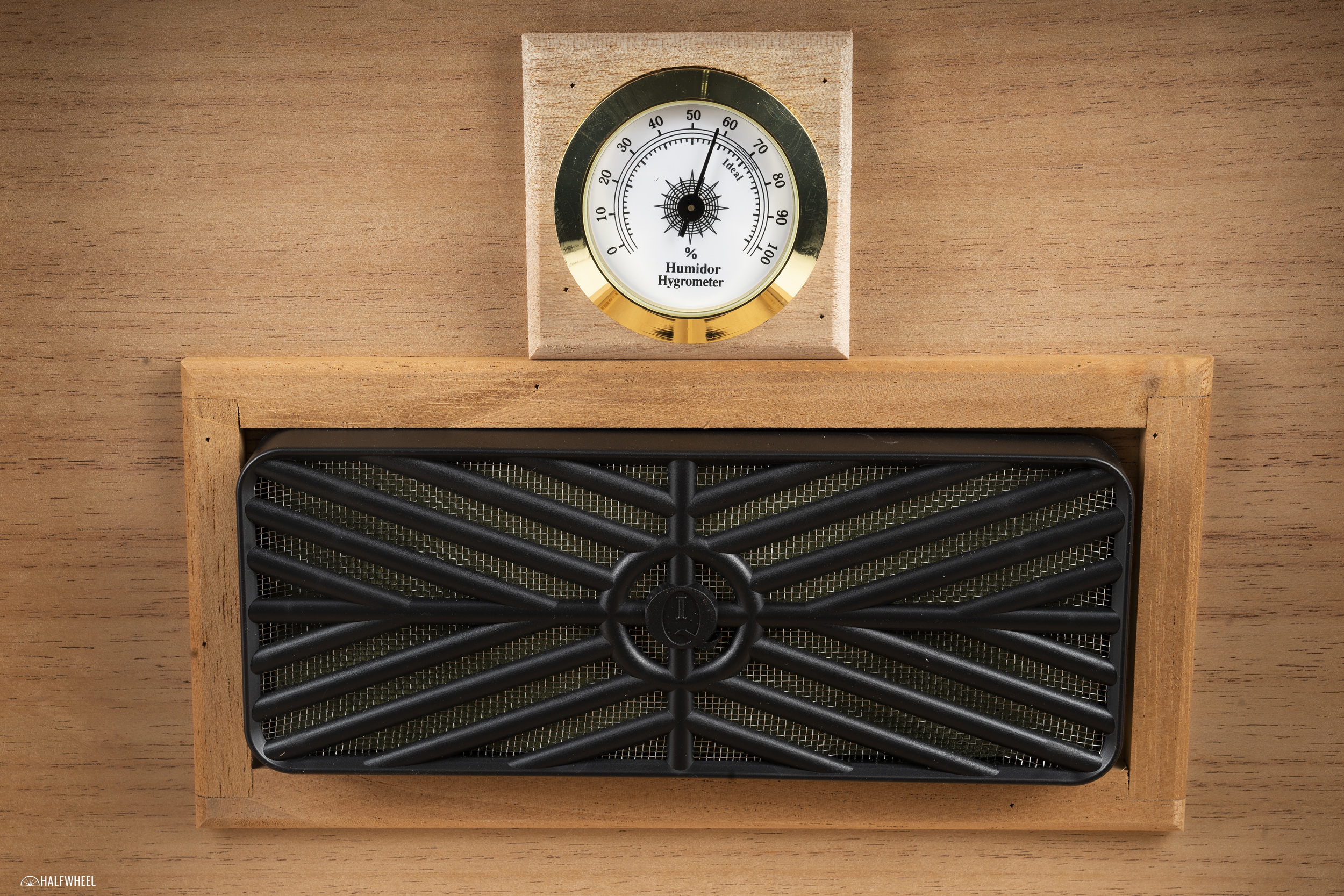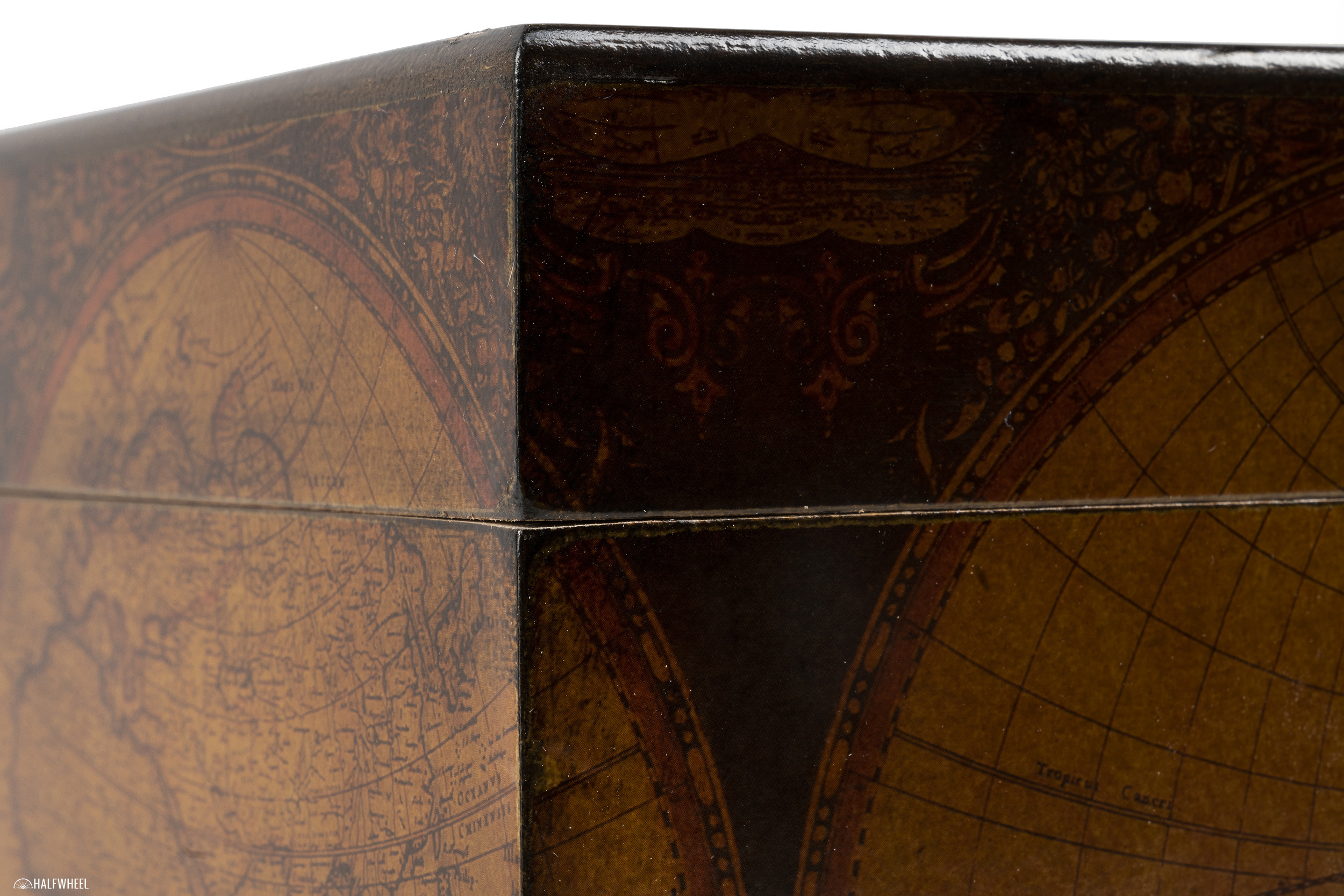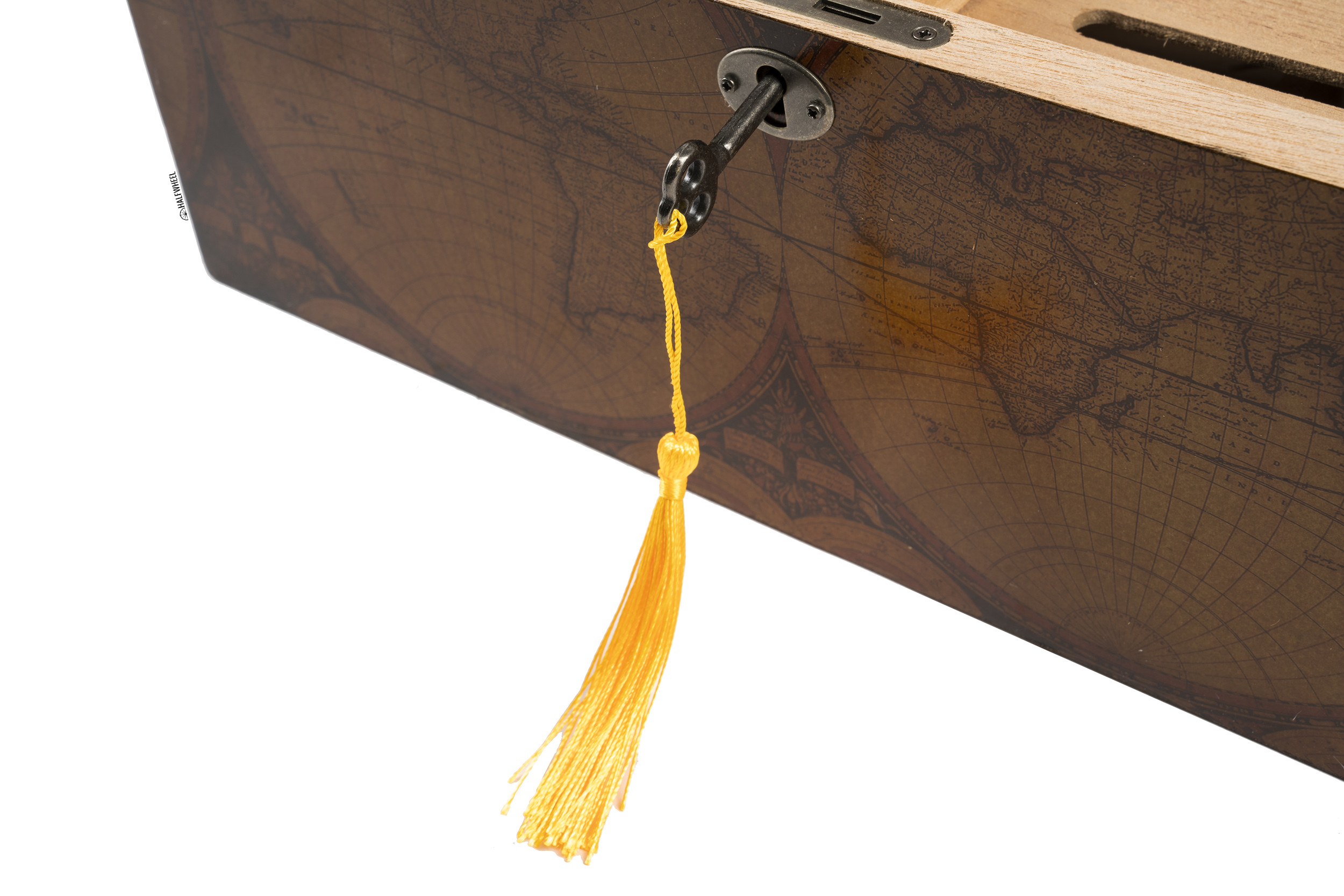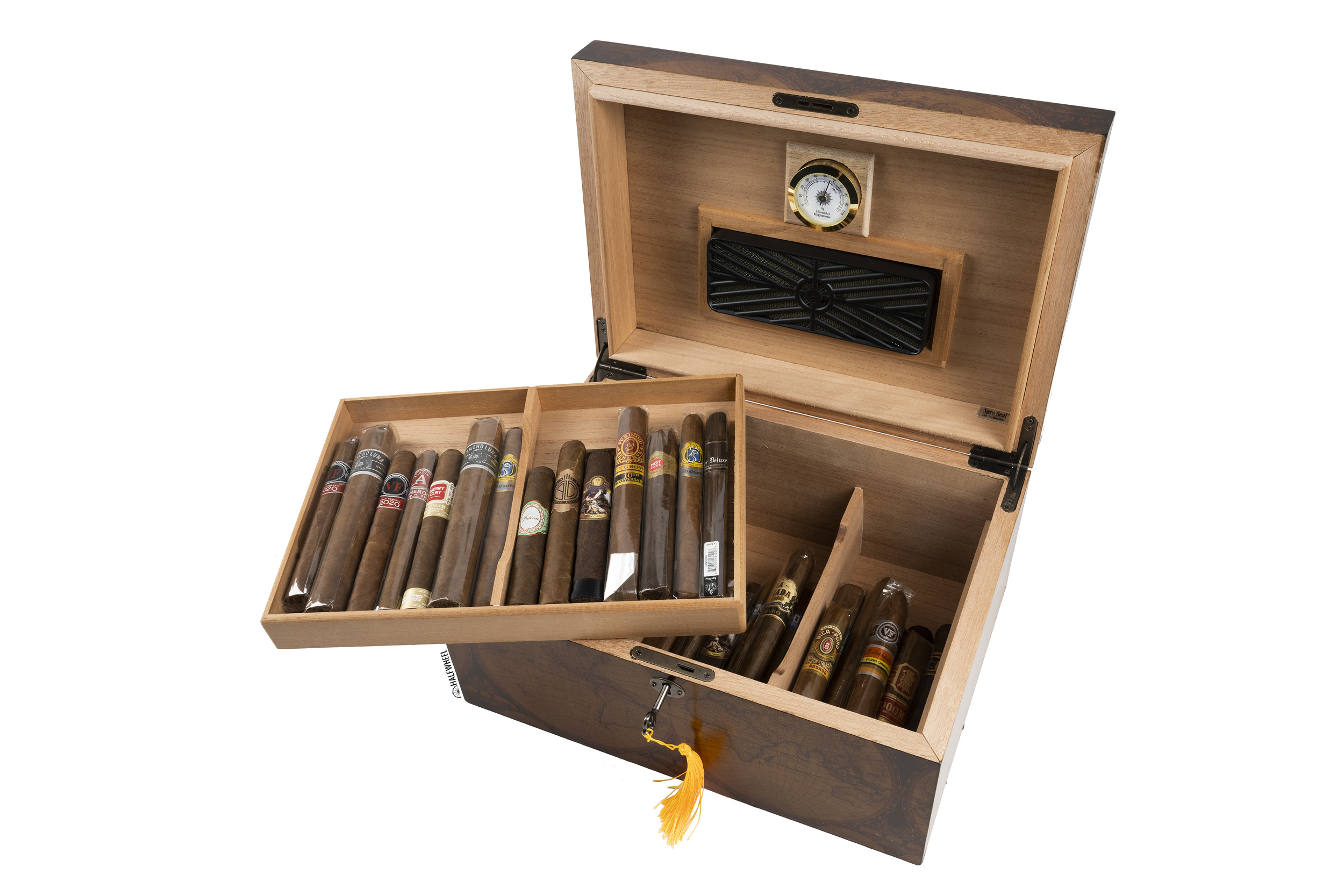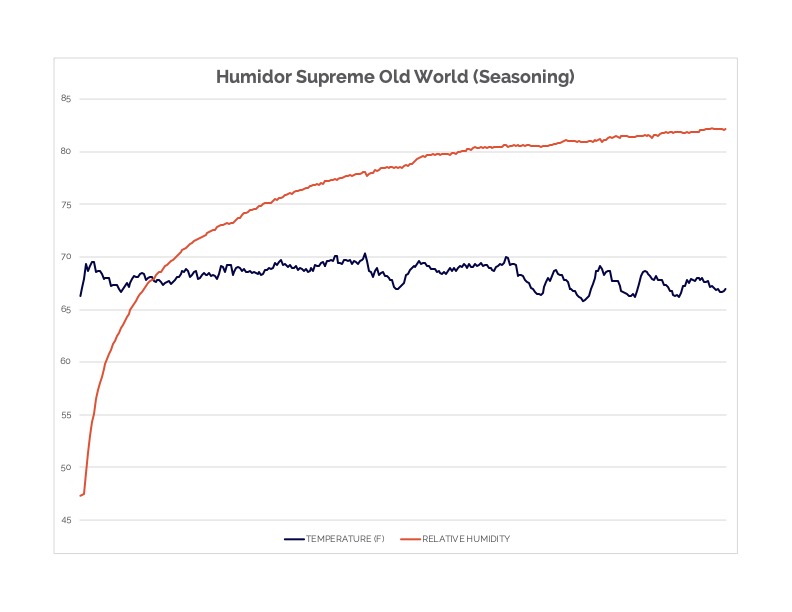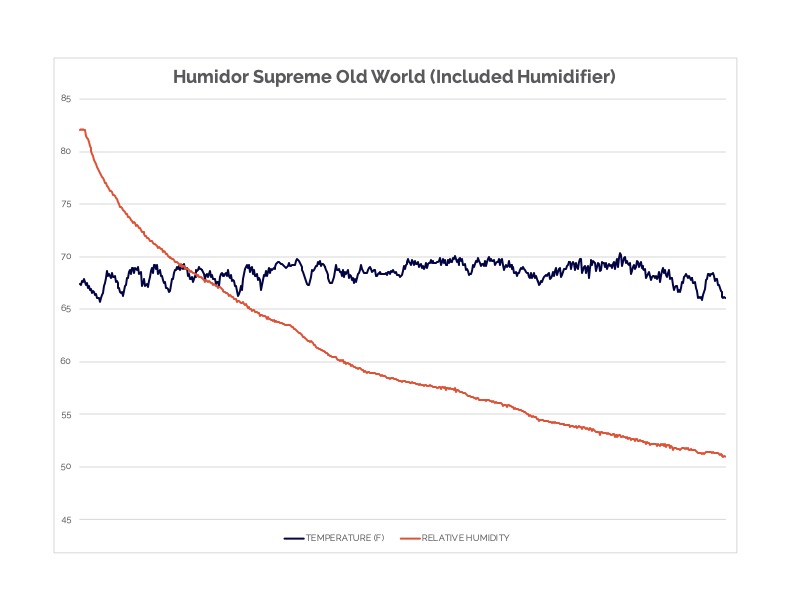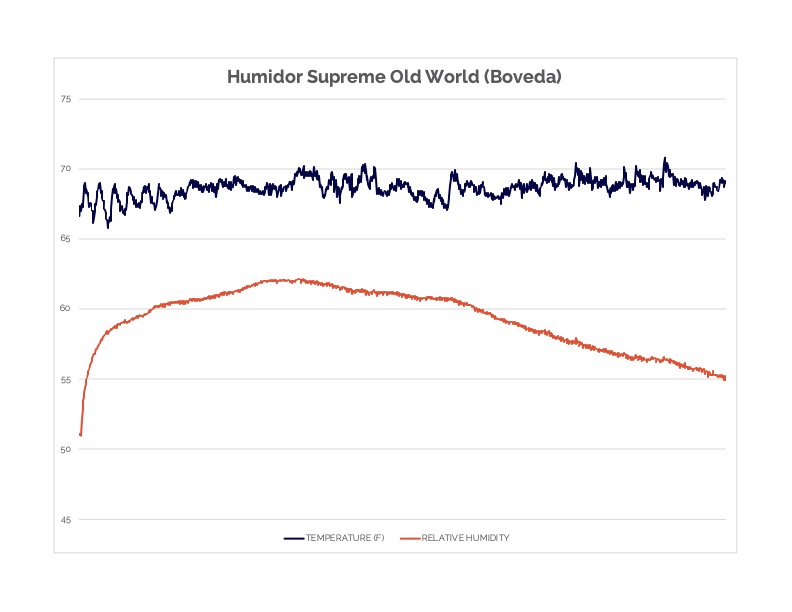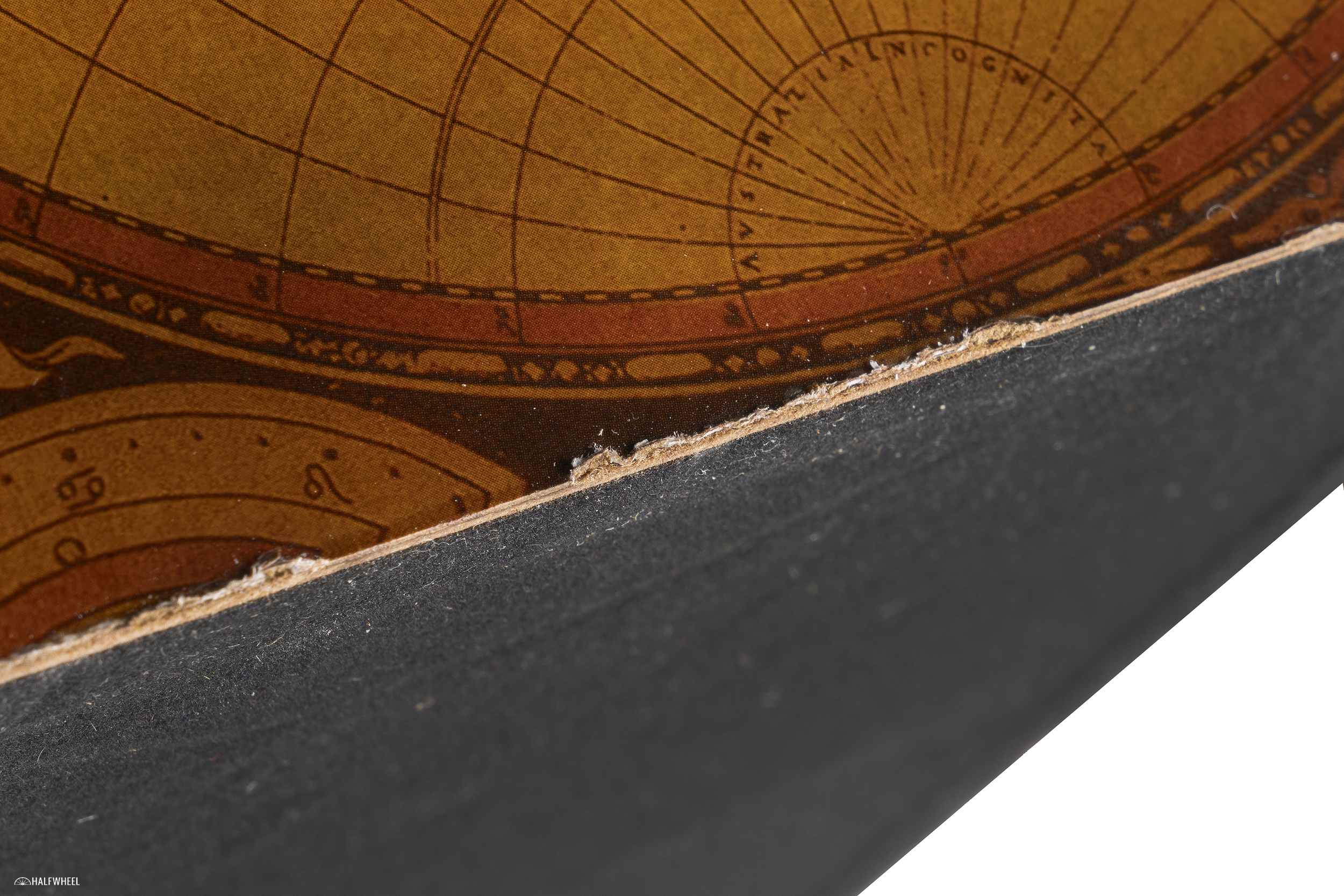It’s been over two months since I last updated our ongoing humidor series, but it’s time for the penultimate entry into the series.
As a reminder, this is a series of reviews of seven humidors that all meet the following qualifications:
- One that looks like a traditional wooden humidor, i.e. no plastic bins or acrylic humidors.
- One that is large enough to hold around 75 robustos, i.e. no travel humidors.
- It must be priced at no more than $175 before tax and shipping.
When I set out to do this project, I knew there would be plenty of options to review from two companies: Prestige Import Group and Quality Importers Trading Co. Both offer dozens of humidors, presumably Chinese-made, at prices that are sometimes challenging to believe. While I’ve already reviewed two Prestige models, and one humidor that Quality Importers makes for another company, today is the first of the Quality Importers-branded products: the Humidor Supreme Old World.
I originally was going to purchase a different Quality Importers humidor, but when buying these humidors last September one thing about this humidor stuck out to me: it was Amazon’s Choice, meaning it got that extra, eye-catching and potentially decision-influencing stripe on its listing.
However, it’s no longer Amazon’s Choice, a change that might be due to the fact that as of mid-June is what not offered by any sellers that offer Prime shipping, but maybe there’s another reason that caused it.
WHAT IS IT?
Quality Importers Trading Co. is, by a number of different metrics, the largest cigar accessory company. The “Quality Importers” name is best known for its use on humidors—ranging from small travel humidors to large cabinet-style models that multiple humans could fit inside—but it also owns brands like XIKAR, Palió, Cigar Caddy, and others. Humidor Supreme is one of Quality Importers Trading Co.’s brands.
The humidor itself is advertised as holding up to 100 cigars and depicts a picture of a map on the exterior panels, except for the bottom, which is felt-lined. On this particular map, much of the Americas—and Australia—is not yet discovered, a reference to the Old World name. It’s an aesthetic that probably looks fine in a lot of rooms, though it’s not my style. Externally, it measures 13.25 inches x 10 x 6.625, which is a bit smaller than Amazon lists it.
There’s also a smaller version of this humidor that is advertised as holding 40 cigars. If you are wondering which is which, the large one comes with a tray, the small one does not.
HOW MUCH DOES IT COST?
We paid $94.99 before tax and shipping in September 2020.
WHAT’S INCLUDED?
- The humidor
- A florists’ foam humidifier with magnetic back
- An analog hygrometer with a magnetic back
- A tray with a removable divider
- Two removable dividers for the bottom area
- A key
- An engraving plate with a sticker-like back to apply to the humidor
As for the florists’ foam humidifier, here’s a brief explanation I’ve given before:
Florists’ foam is the traditional humidification method, it’s a green-colored foam that can also be used to keep plants hydrated, hence the name. Humidor manufacturers will place them inside of plastic or metal containers and then recommend you use some sort of combination of distilled water and propylene glycol. The use of propylene glycol—usually recommended in a 50/50 mixture with distilled water—is that it can help to reduce mold and, in theory, absorb excess humidity, specifically excess humidity over 70 percent relative humidity.
Over the years, I haven’t found this to be particularly effective and there seems to be some evidence that more propylene glycol is needed to maintain 70 percent relative humidity at 70 degrees Fahrenheit. For this testing, I used the regularly recommended 50/50 method.
HOW LARGE IS IT INSIDE?
It measures 12.5 inches x 8.75 x 4.8125, good for 526.4 cubic inches. Per Humidor Discount’s humidor calculator, it should fit 100 robusto cigars, though that’s likely not possible. There’s going to be some room lost for the two strips of wood that are used to hold up the top tray. These numbers also assume that you are using neither the tray nor the dividers.
THE TESTING PROCESS
Given that I have seven humidors to compare against one another, I decided to come up with a testing process for all of them. I wanted to test the humidors both as they are sold and also with some of the variables removed so I could test the quality of the boxes themselves.
All humidors had a brand new and freshly calibrated SensorPush device inside for all parts of the test. The SensorPush is a digital device that measures both the temperature and relative humidity, and then sends that data to a smartphone app where it is stored on a minute-by-minute basis. (The SensorPush is not included in any of these humidors.)
The testing process is as follows:
- Seasoning — Two weeks of seasoning with a new sponge soaked in distilled water placed on a plate inside the humidor. The sponge was re-soaked after the first seven days and then removed once the two-week period was complete. Seasoning a humidor is a process to add moisture to the wood. If you don’t do this process, you run the risk that the wood will be dry and will suck the moisture from both the humidifier and the cigar. This can lead to months of frustration, and worse, dried-out cigars.
- Included Humidifier — Four weeks of using the humidor with the included humidifier with no cigars and without opening the lid. This is intended to test the humidor as the manufacturer sends it. Once this was done, I removed the included humidifier and moved on to step three.
- Boveda — Six weeks of using the humidor with three Boveda 60 gram packs (69 percent) with no cigars and without opening the lid. This is intended to test the humidor’s performance without the variability of how well the included humidifier works.
- Dry Cabinet — Two weeks of the humidor with nothing but the SensorPush inside placed inside of an electronic dry cabinet set at 36 percent relative humidity. The dry cabinet allows for me to control the ambient relative humidity, meaning that I can measure humidity loss without having to worry about how much of that is related to the change in the outside air. This is done to test how well the humidor seals. It was done without a humidification device to get a clearer picture of moisture loss.
SEASONING
It started out at 47.3 percent relative humidity, though within a day it was reading over 64 percent. It took around 50 hours to cross the 70 percent relative humidity line and eight days the sensor push hit 80 percent. The Old World stayed north of the 80 percent threshold for the remainder of the process, peaking at 82.2 percent relative humidity.
I used a moisture meter on all humidors in this series to test how much moisture the wood absorbed. I’m not really sure how accurate these numbers are but this started at 1.7 and ended at 3.8 post-seasoning.
INCLUDED HUMIDIFIER
This just didn’t go well.
It’s almost like there wasn’t a humidifier in the humidor, though there definitely was. I think it’s likely that the humidor didn’t get fully seasoned, which is odd given the numbers produced during the seasoning process. Even then, I would have expected the humidifier to have worked for a little while.
I make notes of the process as I’m testing it, but I didn’t look at the data until after the fact. It’s of no surprise to me that my notes said the humidifier “seemed completely empty” when I removed it.
BOVEDA
The Bovedas tried to make up to where the included humidifier failed, but ultimately, they weren’t able to make it work. When they started their six weeks in the humidor, the packs weighed a combined 183g and they came out weighing 119g. I noticed that the two packs placed in the bottom of the humidor felt drier than the single pack on top.
DRY CABINET
On one hand, I find the positive results to be very interesting and which best falls in line with how the humidor feels. I think the lid seals quite well, maybe too well as is explained below.
That being said, I think the data generated by the dry cabinet test in the series has been a bit misleading. After testing six humidors in the dry cabinet, it doesn’t seem like the dry cabinet is actually producing numbers that are indicative of the best seal, rather, it seems like the lower relative humidity the humidors go into the dry cabinet at, the better they do.
The results have been inconsistent with my own opinions about humidor construction that I wouldn’t use this as a reliable metric to determine whether to buy a humidor.
THE GOOD
- The Seal Feels Nice — When opening and closing, the seal has a suction effect that provides some confidence. It won’t pass a dollar bill test—for whatever that is worth—but it’s better than a lot of humidors.
- This is a Lot of Humidor for $100 — There are issues, but in terms of bang for your buck, this humidor offers a lot. It’s large, it comes with a tray, the dividers, and so on.
- The Advertised Number of Cigars isn’t Completely Made Up — Particularly at the lower price points, these numbers can oftentimes be way out of whack. The fact that you could get close to holding 100 robustos is pretty nice considering the “up to 100 cigars” advertising.
- The Look — It’s not for me, it may not be for you, but it’s fairly well done all things considered.
- The Fit is Good — This is not the best humidor on the market, but unlike many other humidors in this series, there’s nothing overtly off in terms of the construction of the box. Everything seems to line up properly, there’s nothing coming undone, etc.
THE BAD
- This Humidor Needed Longer Seasoning Than Anyone Would Expect — This seems to be an issue with the cheaper models I’ve used, but this seems like it needed a lot more seasoning. While correctable, this is very problematic to me because most consumers would never assume this much seasoning would be inadequate. It’s particularly concerning given the humidor spent six days with 80+ percent relative humidity inside. For the record, that’s more than 80 percent relative humidity in the air, the wet sponge was probably putting off more than 90 percent relative humidity.
- The Performance Wasn’t Great — A need for a lengthy seasoning, an underpowered humidifier—whatever the case is, this is a classic case of a humidor set-up process that could damage your cigars. If you followed the advice of most people, you’d be putting cigars in a humidor that was super dry, which means your cigars would have the humidity sucked from them.
- The Humidor Won’t Close Without Added Effort — If I open the humidor and then just push the lid and let it fall with gravity, it won’t come close to shutting. In fact, I needed to apply extra effort to get the lid to fully close. Opening the humidor is also more work than most humidors. I suspect this is an alignment issue where something is just slightly off. It could also be the case that this goes away once the humidor has absorbed all the moisture it needs.
- The Finish Isn’t Great — While far from the worst humidor in this series, there are some obvious appearance issues with this humidor. Parts of the exterior showed up scratched or with bubbles, the interior wood has some rough edges that can be solved with a bit more sanding, and there are various water spots—or discoloration spots that look like they were caused by liquid—on various parts of the interior, especially the inside of the lid. There’s also some sort of small hole that is in the back of the humidor. My guess is someone tried drilling the hinge for the lid and realized it wasn’t in the right place. It’s a very clear small circular hole, rather reminiscent of a thin screw or drillbit.
THE COMPETITION
- Savoy Marquis ($111.95) — This humidor has a unique design that shows a visible gap in the seal on the back. After thinking about this more—albeit, without anyone from the company mentioning this review to me—I think I might have been wrong about this humidor. It’s solidly made for the price and the performance has been pretty good.
- Prestige Princeton ($134.55) — This was the “safe” choice from Prestige and I think it’s a pretty sensible humidor with one major flaw. The single included humidifier was unable to provide enough humidity for this unit and as such the testing results were awful. I cannot recommend this humidor unless you are going to replace the humidification system.
- Prestige Winchester ($149.95) — The Prestige Winchester’s unique wide design made it one of the more interesting humidors in this series. Unfortunately, the unit we purchased was as poorly constructed as any humidor I’ve ever reviewed. Just stay away.
- Craftman’s Bench Havana 90-Cigar ($79.95) — This is the least expensive humidor I’ve ever reviewed and it felt like it. Beyond the issue with the floor—which had become dislodged in a fashion that made it both visible and audible—this humidor came with a tiny humidifier that is way too small for this size of humidor.
- Yannabis Cigar Humidor ($159.99) — This is an obvious knock-off of a high-end Colibri/Daniel Marshall humidor that I liked a lot. While it’s a knock-off from a company I’ve never heard of, it’s actually the best humidor I’ve reviewed in this series.
- The Deauville Tobacco Leaf ($99.99) — This is the final part of the sub-$175 humidor test. A full review is coming and I will update this review once that review has been published.
- Boveda Large Acrylic Humidor ($180) — Note: Boveda recently updated this humidor, I’ve purchased but have not started using the new model. My thoughts on the old model are: This humidor is just over the $175 price point but would otherwise be the recommended option. It’s a large, see-through plastic box with a removable tray that allows you to show off your cigars. More importantly, it’s plastic, which means you don’t need to worry about seasoning it and really don’t need to worry about the seal. It just works. The issue with the Boveda is that it just doesn’t look like what most people think of as a humidor.
- Colibri Heritage Humidor ($495) — If you want a wooden humidor that is going to last, I think you are going to want to spend closer to $400. The Heritage Humidor can regularly be found at that price point and it’s just so much better in just about every way. It feels solid, it avoids the major manufacturing flaws and it has a much more modern look, albeit one that isn’t for everyone.
SHOULD YOU BUY IT?
No.
While this might be the best humidor for under $100 I’ve ever used, I’ve yet to see evidence that it actually works well, particularly with the included accessories. The data with the Bovedas is particularly challenging for me to understand because it seems to suggest that there are more issues than just with the seasoning process. What troubles me is that the seasoning should have been enough to avoid the issues that took place during the included humidifier test, but it didn’t. If I was a consumer and this was my first or second humidor, I suspect the effects on my cigars would not be great and I would likely be disappointed by the Humidor Supreme Old World.

